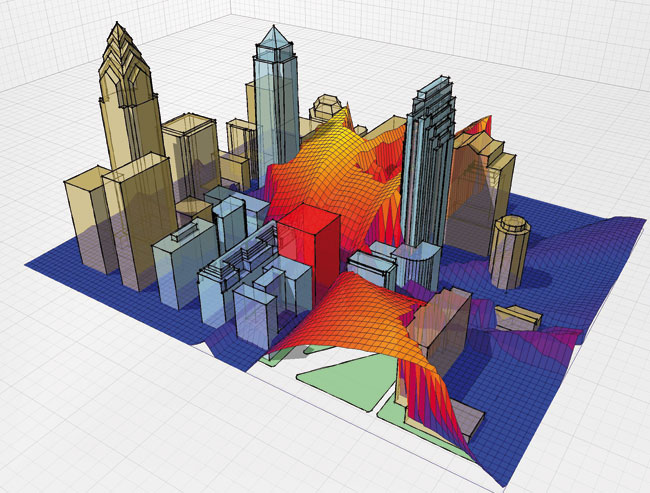Bentley Systems’ BE Inspired event started off as a temporary replacement to the company’s main user conference when the banking crisis hit. Now the award event appears to be a standard fixture in the calendar and this year Martyn Day was an awards judge.
Looking back, it is amazing that the banking crisis was a few years ago. It seems to have been nothing but trouble for the building and construction industry since. With travel bans introduced by most of their customers, many CAD companies scaled back their user events.
Bentley Systems had to cancel its own big end-user jamboree and instead opted to run the annual awards ceremony, together with a select number of customers in Charlotte, North Carolina. The intimacy of a small group provided a great opportunity to talk to the company’s leaders, as well as their more innovative customers. Bentley Systems subsequently deemed the new format a success and now runs two events, one for users and one on ‘thought leadership’ for press, analysts and infrastructure customers who entered the company’s annual awards.
This year’s event was in Amsterdam and I was invited to be on the judging panel for the Architecture and Structure categories of the awards. While the sceptical among you may think that these awards go to customers that spend the most, I can confirm that it is totally independent and a panel of non-Bentley affiliated industry folks get to look through hundreds of entries (documents, videos, images) and sweat it on numerous conference calls and in face-to-face meetings.
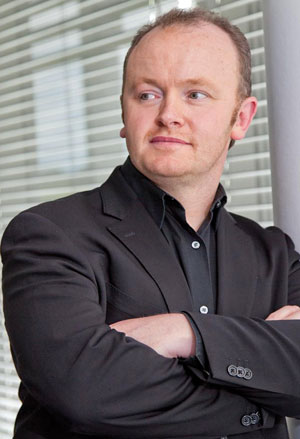
As we weeded our way through the 164 entries it got harder to favour one over another. There were debates, sometimes heated, frequently with passion about the various merits of who, why, what and how. Our Bentley ‘minders’ helped out where they could but strictly stayed out of any decision-making (even when we begged them for help to break split decisions). It was a difficult but extremely worthwhile process as we got to see some very good real-world uses of 3D CAD technology.
Keynotes
Bentley loves the word ‘infrastructure’, and it is guaranteed to be in any presentation by the company — but what a few years the global infrastructure market has endured.
Bentley Systems CEO, Greg Bentley, gave a keynote that highlighted how things were slowly getting better, from company revenues to product usage. Bentley has a very advanced server architecture that means Bentley knows when and how often its software is used. In a number of graphs we could see the drop in hours spent designing as the global banking crisis hit. Alongside was almost two year’s of data showing very slow, gradual increasing use in the United States; but there was variation across other continents, with Asia doing the best and perhaps Europe still suffering the most.
Bentley is back in growth mode after a banking-crisis dip. Greg Bentley presented a few graphs that would indicate that the company is bouncing back quicker than its long-time rival Autodesk. This could probably be due to Bentley’s clients benefitting from the additional infrastructure spend from government stimulus money. A segment of the market in which Autodesk has less penetration.
Bentley has compiled and released for the first time the Bentley Infrastructure 500 Top Owners ranking to help people appreciate and explore the magnitude of investment in infrastructure and the potential to continually increase the return on that investment.
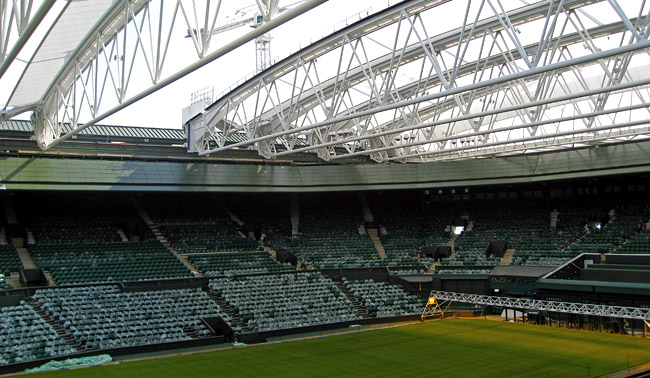
The infrastructure value represented is over $13 trillion which, to provide perspective, is close to the United States’ annual GDP and equal to the combined annual GDPs of China, Japan, and Germany.
Data sources for the Bentley Infrastructure 500 included published financial statements and third-party research. The rankings, which Bentley will update annually, make it possible to readily compare investment levels across types of infrastructure, regions of the world, and public and private organisations.
The top five countries, in terms of the infrastructure value of the Top Owners headquartered in each, are:
1. United States — 166 Top Owners, $4,241 billion
2. Japan — 58 Top Owners, $1,349 billion
3. China — 29 Top Owners, $870 billion
4. France — 22 Top Owners, $747 billion
5. United Kingdom — 23 Top Owners, $617 billion
The document makes for interesting reading and I have no idea how it was compiled as it would seem an impossible task. Facts like the biggest manufacturer owner is Toyota Motor at $72 billion and the biggest bank owner is Royal Bank of Scotland at $25 billion — so now we all know what we have bailed out and is now publicly-owned. Read it here.
Bentley senior vice-president Bhupinder Singh gave an update on the benefits of a number of technologies that were released last year, namely i-model and the integrated structural model. There was an interesting demonstration of forthcoming 3D document dimensioning and a lot of talk about supporting the latest tablet PCs and the iPad, in fact there was an iPad app on show in the break-out coffee area, together with some cool 3D visualisation technologies.
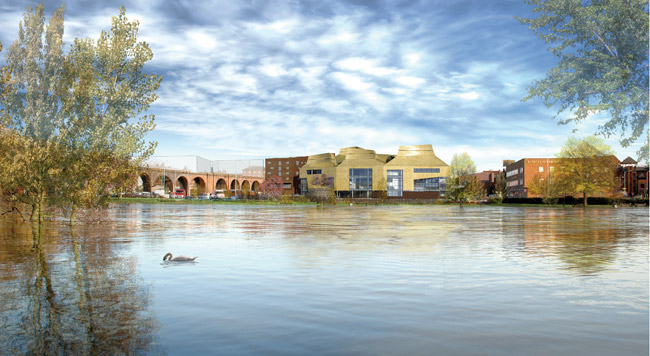
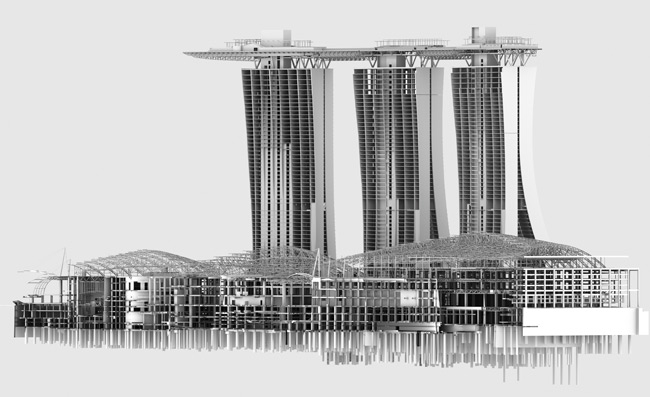
During one of the socials I had a great conversation with Mr Singh of the merits of cloud computing and the opportunities it raised for Bentley. The company already has an extensive client-server architecture of its users and there appears to be lots of opportunity for the company to offer online services in addition to its traditional desktop solutions — although do not expect to see Bentley develop for anything too far from Microsoft, except perhaps the iPad.
Projects
This year’s entries brought an embarrassment of riches, with everyone from signature architects like Zaha Hadid and a horrendously complex steelwork created by Arups, to innovative water catching buildings inspired by bugs to a mundane airport landing refurbishment. All had their own story and valid reasons why they should be highlighted. I have picked a selection here that pushed my and my fellow judge’s buttons.
The Namibian Hydrological Centre of Excellence
Not a winner but certainly highly recommended and innovative. Atlas industries demonstrated the design for a fictional hydrological centre that could be fabricated in a desert/sea location, such as the skeleton coast in Namibia. Africa has a water shortage and this design, inspired by a beetle, which sits on top of the sand dunes to catch the morning fog on its hind legs, really imitates nature. A fog catching net provides a place for water to condense and be trapped, where it is stored and purified. The design also provided a visitor centre and lecture rooms and utilised self shading to limit artificial cooling. We all hope that someone decides to build one of these and try it out.
Marina Bay Sands
Winner Innovation in Structural Engineering — The Moshe Safdie design features three cascading hotel towers topped with the 1.2 hectare Sands SkyPark cantilever platform. Also on the site, are crystal pavilions and a museum inspired by the shape of a lotus flower.
The SkyPark cantilever, 200 metres up, is the longest of its kind in the world and required an immense amount of steelwork (7,000 tonnes). Arups designed the structure to withstand typhoon strength winds and the vibration caused by people movement. The sheer amount of structural work required impressed the judges, let alone the unique design requirements, as well as all the editing during the iterative design process. Think what you will of the building’s aesthetics, the structural model was deemed a thing of great beauty.
Winning projects in the Architecture and Structural categories:
Innovation in Building:
Winner Henning Larsen Architects — Crystal Towers — Riyadh, Saudi Arabia
Innovation in Generative Design:
Henning Larsen Architects — Villas in the Sky — Riyadh, Saudi Arabia
Innovation in Structural Engineering:
Arup Singapore — Marina Bay Sands Integrated Resort —Singapore
Innovation in Campuses, Airports, and Military Installations:
Zaha Hadid Architects — Stone Towers — Cairo, Egypt
For a full list: www.bentley.com/2010beinspiredwinners.
41 Cooper Square
Morphosis architects — Not a winner, but the most hotly contested of the projects submitted. 41 Cooper Square, is the new academic building for The Cooper Union, a highly respected New York ‘free’ university in America which has been running for 150 years. Internationally renowned architects, Morphosis had to produce a modern building to tight budgetary constraints and the end result is really stunning. The young team used all the latest technologies and the presentation displayed an extensive understanding of Generative Components.
There was a little confusion as to which part of the project submitted for the competition, as the documentation related to the building but the event presentation focussed on the ‘Gigamesh’ atrium that was designed with GC. It consists of an undulating lattice that reaches the full height of the building and involved the scaffolding and moulding contractors to work together to hand craft and suspend a giant mesh.
During the design the mesh structure was constantly questioned due to budget and was finally built out of some contingency money that had been saved. The passion to include this in the design was obvious and the amount of trial and error required to build the intense mesh required a lot of learning on the job. The use of GC in the definition of the design was exemplary, especially as there were so many changes. However, we didn’t hear enough about the use of GC in the building design and there were questions raised as to whether this was art or architecture. Still Morphosis is a fantastic practice, with obviously very bright designers.
Crystal Towers
One of two winning entries from Henning Larsen Architects, The Crystal Towers is a commission from Saudi Binladen Group. Within a new financial district in Saudi Arabia’s capital city, Riyadh, the two 18- and 26-storey Crystal Towers are located between the ‘Financial Plaza’ and the ‘Wadi’, a pedestrian thoroughfare.
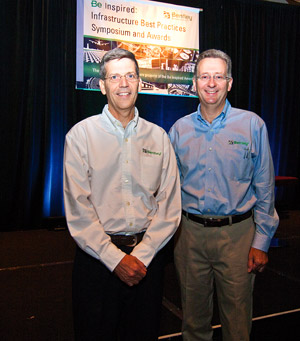
Recessed, scaled, crystalline openings were calculated to minimise solar heat gain and associated cooling requirements, while optimising views to the surrounding plaza and landscape. The project is designed to achieve LEED Certification upon completion. The team demonstrated an interesting use of Generative Components to design the stone cladding of this highly insulated and unusual building.
Villas in the sky
Winner Generative Components innovation. Having already one another award the judges were concerned about giving the same team another award but each category had to be judged on its merits and in this design and presentation we were left in no doubt that Generative Components was used in a very compelling way to created a very complex facade that went through many changes in the design process.
The 34-storey tower has shifted upper plates to create a jagged look. The angled panels at the top are used to reduce the strong sunlight and energy consumption. GC was used to automate much of this unusual façade.
The Stone Towers business park
Winner of the Innovation in Campuses award, the Stone Towers business park is designed to harness the power of the sun. Zaha Hadid’s 180,000 m2 Stone Towers project had the typically strong forms that we have come to expect from her studio. The project combines world-class office facilities with retail stores, food and parking facilities, and a five-star hotel.
The towers comprise 550,000 sq m above ground and another 600,000 sq m below ground. Inspired by the patterns and textures of ancient Egyptian stonework, the tower façades will be covered with recesses and protrusions that capture the effects of light and shadow. In this an incredibly dense mixed-use development, the judges couldn’t help but be blown away.
Conclusion
This year’s BE Inspired event lacked the big product launch news of past events and I missed the usually highly engaging Keith Bentley technology keynote, but there was a wealth of great customer projects. One of the winners, London’s CrossRail, gave a fantastic presentation of the huge effort that is going on in the UK capital, in one of the biggest projects currently in the world. It is a huge endeavour to enable those troublesome bankers to commute to work quicker.
If you are a MicroStation customer but have not thought about entering the competition, I would strongly urge you to do so. If you do, pay attention to the detail and documents you submit. Tell the story of your project and how you used all the technology at your disposal to innovate and win against the odds.

